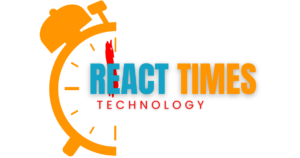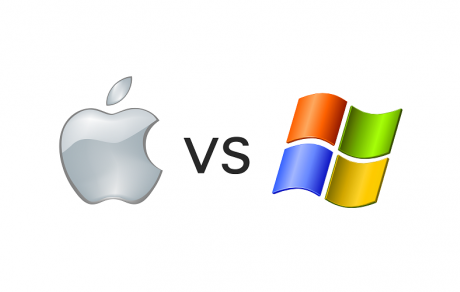Introduction to the ongoing debate between Windows and MacBook
The tech world has long been divided into two camps: Windows and MacBook. For years, users have passionately defended their chosen operating systems, sparking debates that can get as heated as sports rivalries. Whether you’re a student, a creative professional, or just someone looking for the best laptop experience, the choice between these two giants can feel overwhelming. Each comes with its own set of features, advantages, and quirks that cater to different needs and preferences. So why is this battle so fierce? And which side should you pick in the ongoing saga of https://ashitznews.com/windows-vs-macbook/ Let’s dive deep into this epic showdown to uncover what sets them apart and help you decide which one might be your perfect match!
A brief history of Windows and MacBook operating systems
The history of Windows and MacBook operating systems is a tale of innovation and rivalry. Microsoft introduced Windows in 1985 as a graphical extension to its MS-DOS system. It aimed to provide users with a more intuitive way to interact with their computers.
In contrast, Apple launched the Macintosh in 1984, pioneering user-friendly design with its mouse-driven interface. This was revolutionary for personal computing at the time.
Over the years, both platforms evolved significantly. Windows expanded rapidly throughout the 1990s, introducing various versions that catered to diverse user needs. Meanwhile, Apple’s Mac OS became known for its sleek design and stability.
As technology progressed into the 21st century, both companies continued to innovate while maintaining distinct philosophies around usability and aesthetics. Their legacies are now entrenched in modern computing culture.
The main differences between Windows and MacBook
Windows and MacBook represent two distinct ecosystems. Windows, developed by Microsoft, is known for its versatility and widespread use across various devices. It’s compatible with a range of hardware configurations, which appeals to many users.
On the other hand, MacBooks run on macOS created by Apple. This operating system offers a seamless experience tailored specifically for Apple hardware. The integration between software and hardware often results in smoother performance for MacBook users.
Customization is another key difference. Windows allows extensive personalization options—from changing themes to modifying system settings—whereas macOS has a more uniform aesthetic that prioritizes simplicity over extensive customization.
Users also notice differences in gaming capabilities. Many games are designed primarily with Windows support due to its larger user base and compatibility with diverse graphics cards, while Macs may have limited gaming options or require additional steps like installing Boot Camp.
Performance and speed comparison
When it comes to performance and speed, Windows and MacBook each have their own strengths. Windows PCs often offer a wide range of hardware configurations. This diversity allows users to choose systems tailored for gaming or resource-heavy applications.
MacBooks, on the other hand, are optimized with Apple’s proprietary M1 and M2 chips. These processors deliver impressive efficiency and speed for everyday tasks like browsing or video editing.
In real-world scenarios, many users notice that MacBooks handle multitasking smoothly without lagging. Meanwhile, high-performance Windows machines can easily outpace them in demanding tasks when equipped with powerful GPUs.
Your choice may depend on specific needs—whether it’s raw power from a custom-built PC or seamless optimization found in a MacBook’s sleek design. Each platform has unique capabilities catering to different user preferences.
User interface and customization options
The user interface is one of the most noticeable differences between Windows and MacBook. Windows offers a more flexible layout, allowing users to adjust their desktop according to personal preferences. You can pin apps, create virtual desktops, and even change the start menu’s appearance.
On the other hand, MacBook’s interface emphasizes simplicity and elegance. The Dock provides easy access to applications while maintaining a clean aesthetic. macOS also integrates seamlessly with other Apple products, enhancing usability across devices.
Customization options vary significantly as well. Windows allows extensive modifications from themes to icon arrangements. Users have countless third-party tools at their disposal for deeper changes.
MacBook limits customization but focuses on consistency and intuitive design. This appeals to users who prefer a streamlined experience without overwhelming choices or complexity in settings adjustments.
Availability of software and compatibility with devices
When it comes to software availability, Windows holds a significant advantage. With its extensive user base, most applications are developed primarily for the Windows platform. Gamers especially benefit from this, as many popular titles are only available on Windows.
MacBook users enjoy a curated experience with macOS software that tends to be more polished and optimized. However, some essential programs may not be accessible or have limited versions compared to their Windows counterparts.
Compatibility is another crucial aspect. Windows PCs generally support a wider range of hardware peripherals and devices, making integration seamless for users who require diverse functionality.
On the other hand, MacBooks often excel in compatibility within Apple’s ecosystem—think iPhones and iPads—offering unique features like Handoff and AirDrop which enhance productivity for Apple users.
Both platforms present distinct advantages based on your needs and existing devices.
Security features
When it comes to security features, Windows and MacBook offer distinct approaches. Windows has made significant strides in enhancing its defenses, particularly with the introduction of Windows Defender. This built-in antivirus software provides real-time protection against malware and other threats.
On the other hand, MacBooks are known for their robust security architecture. The macOS is designed with a Unix-based system that inherently offers strong permissions controls. Additionally, Apple places a heavy emphasis on privacy features, including advanced encryption options.
Both systems have their unique vulnerabilities as well. While Macs tend to be less targeted by malware due to their smaller market share, they aren’t immune to attacks. Conversely, the widespread usage of Windows makes it a frequent target for cybercriminals.
Choosing between them often depends on individual needs and how much effort one is willing to invest in securing their device effectively.
Price comparison and budget considerations
When it comes to price, Windows and MacBook systems offer a wide range of options. Windows laptops can be found at various price points, making them accessible for budget-conscious consumers. You can get a basic model for under $300 or invest in high-end machines that rival MacBook performance.
In contrast, MacBooks tend to start at a higher baseline cost. Even the entry-level models come with premium pricing due to their design and build quality. This can be a significant factor if you’re on a tight budget.
Consider additional expenses too; software and accessories can add up quickly regardless of your choice. It’s essential to weigh the initial investment against long-term needs and potential upgrades down the line.
Your budget will play an important role in determining which operating system feels right for you. Be sure to explore all available options before making that final decision.
Pros and cons of each option
When it comes to Windows, versatility is one of its standout features. Users enjoy a wide range of hardware choices and price points. This means you can find a device that fits your specific needs without breaking the bank.
On the downside, with so many options comes inconsistency. Not every Windows machine performs equally well, leading to varying levels of satisfaction. Additionally, some users may encounter more frequent malware threats compared to MacBook users.
MacBooks shine in design and user experience. Their sleek aesthetics and seamless integration with other Apple products create an appealing ecosystem for loyal fans.
However, this premium aesthetic often comes at a higher price point. The limited hardware options can also frustrate those looking for budget-friendly alternatives or specific configurations tailored to their needs.
Factors to consider when choosing between Windows and MacBook
When deciding between Windows and MacBook, consider your primary use case. Are you a gamer, graphic designer, or casual user? Each system has strengths tailored to different needs.
Think about compatibility as well. If you rely on specific software, ensure it runs smoothly on your chosen platform. Many professional tools are optimized for one over the other.
Budget also plays a critical role. Windows devices generally offer more choices at various price points. On the other hand, MacBooks tend to come with a premium price tag but often boast longevity and resale value.
User experience is another key factor. Apple’s ecosystem offers seamless integration across devices while Windows provides versatile customization options.
Consider support and community resources available for each option; this can make troubleshooting much easier down the road.
Conclusion: Which one is better for
When it comes to choosing between Windows and MacBook, the decision ultimately hinges on personal preference and specific needs. Windows offers a versatile platform with extensive software compatibility, making it ideal for gamers and professionals who rely on specialized applications. Its customization options allow users to tailor their experience extensively.
On the other hand, MacBooks shine in design and user experience. They are known for their seamless integration with other Apple products, providing an ecosystem that many find appealing. The intuitive interface tends to attract creative professionals who value aesthetics and simplicity.
Price can also be a deciding factor. While Windows devices come in a broad range of prices catering to various budgets, MacBooks generally command a premium price that reflects their build quality and brand reputation.
Security features set both platforms apart as well; however, the closed nature of macOS often makes it less prone to malware compared to its counterpart.
Evaluating your daily tasks—whether they involve gaming or creative work—alongside budget considerations will guide you toward the right choice for you. Whether it’s https://ashitznews.com/windows-vs-macbook/ that aligns more closely with your lifestyle depends on what features matter most in your day-to-day activities.

